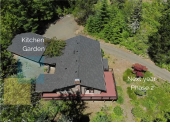








I make a Maple Syrup instructional movie! Check it out HERE
SKIP books, get 'em while they're hot!!! Skills to Inherit Property
See me in a movie building a massive wood staircase:Low Tech Lab Movie

 1
1




"Never doubt that a small group of thoughtful, committed citizens can change the world; indeed, it's the only thing that ever has."-Margaret Mead "The only thing worse than being blind, is having sight but no vision."-Helen Keller














"Never doubt that a small group of thoughtful, committed citizens can change the world; indeed, it's the only thing that ever has."-Margaret Mead "The only thing worse than being blind, is having sight but no vision."-Helen Keller












Middle Tennessee - zone 7a














"Never doubt that a small group of thoughtful, committed citizens can change the world; indeed, it's the only thing that ever has."-Margaret Mead "The only thing worse than being blind, is having sight but no vision."-Helen Keller




I'm concerned about that. The two areas that have the least mature trees are a tobacco basin that was farmed until the late 60s, and a large sloped field that was grazing land for cows. That field is where the old farmhouse was, and perhaps that's where we'll build. It's a little close to the neighbors for my taste (I know they spray some, for ground bees), but we could put in a hedge ...Roberto pokachinni wrote:A permie project that is in a forest is a tough go.
Middle Tennessee - zone 7a
 1
1




I know that there are two kinds of timber harvests: ugly and really ugly.
 1
1




 1
1




Kyle Neath wrote:
I know that there are two kinds of timber harvests: ugly and really ugly.
The first action I would suggest is to break out of this mindset.
5. Will they be planting new seedlings? Doing a controlled burn? Both of these options are great for replenishing the forest in the harvested areas.
If it were me, I'd be out with flagging tape and survey flags, maps, and camera to identify and protect the trees you want to remain standing.
Middle Tennessee - zone 7a

|
That's my roommate. He's kinda weird, but he always pays his half of the rent. And he gave me this tiny ad:
The new kickstarter is now live!
https://www.kickstarter.com/projects/paulwheaton/garden-cards
|




